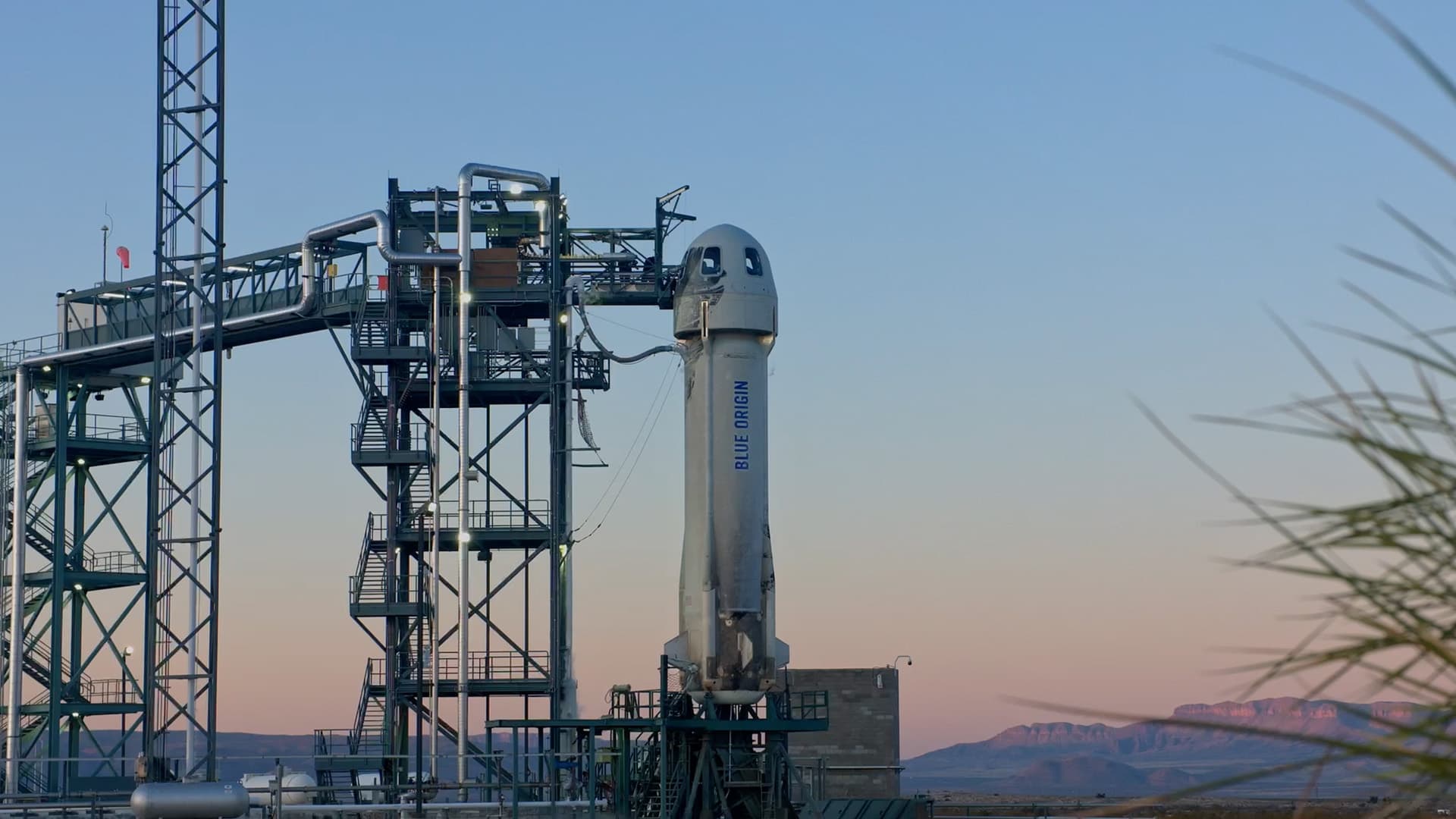
Blue Origin's BE-7 Engine Testing Further Demonstrates Capability to Land on the Moon
HUNTSVILLE, AL – Blue Origin’s BE-7 engine program continues its testing at NASA Marshall Space Flight Center. This week, the program kicked off the fourth thrust chamber test series of its high-efficiency engine. The hotfire testing further validates the engine that will power Blue Origin’s National Team Human Landing System (HLS) in support of NASA’s Artemis program.

So far in this recent campaign, the thrust chamber was tested for a duration of 20 seconds. This brings the cumulative testing time on the BE-7 thrust chamber to 1,245 seconds. The BE-7 is a high-performance, additively manufactured liquid oxygen/liquid hydrogen lunar landing engine with 10,000 lbf of thrust – throttling down to 2,000 lbf of thrust for a precise landing on the Moon.
“This thrust chamber test measured the ability to extract energy out of the hydrogen and oxygen cooled combustor segments that power the engine’s turbopumps – the key to achieving high engine performance,” said John Vilja, senior vice president, Engines, Blue Origin. “The high specific impulse, deep throttling, and restart capabilities of the BE-7 make it the ideal engine for large lunar payload transport as well as many other in-space applications. Thanks to the NASA Marshall Space Flight Center team for their support in this testing. We value this partnership and are looking forward to more test campaigns with them.”
Within the National Team’s Human Landing System architecture, the BE-7 is used on both the Descent Element and Transfer Element.
“The BE-7, a turbomachinery-based engine using the most efficient propellants, is optimal for deep-space maneuvers and landing on the Moon,” said Brent Sherwood, vice president, Advanced Development Programs, Blue Origin. “Our engine test series is steadily maturing what’s needed to get Americans safely on the lunar surface as soon as possible. We are positioning to use the Moon’s ice resources for rocket propellant, which will make exploration sustainable and open the Moon for commerce.”
Developed privately over several years, the BE-7 is the latest high-performance engine in the Blue Origin family, building upon the demonstrated success of the BE-3 PM hydrogen/oxygen engine that powers the New Shepard vehicle.

About the National Team
Blue Origin leads the HLS National Team, which includes Lockheed Martin, Northrop Grumman, and Draper. The team is offering its Human Landing System to NASA’s Artemis program to sustainably return Americans to the lunar surface. As prime contractor, Blue Origin leads program management, systems engineering, safety and mission assurance, and mission engineering and operations; and develops the Descent Element. Lockheed Martin develops the Ascent Element and leads crewed flight operations and training. Northrop Grumman develops the Transfer Element that delivers the lander into low lunar orbit and final descent. Draper leads descent guidance. Click here for more information.
Share
Latest Posts
 Apr 14, 2025News
Apr 14, 2025NewsBlue Origin’s New Shepard Rocket Completes 31st Mission To Space
Blue Origin successfully completed its 11th human spaceflight for the New Shepard program. The crew included Aisha Bowe, Amanda Nguyễn, Gayle King, Katy Perry, Kerianne Flynn, and Lauren Sánchez.
 Apr 4, 2025News
Apr 4, 2025NewsNew Glenn Awarded Critical National Security Space Launch Contract
Blue Origin won a contract to serve as a National Security Space Launch Phase 3 Lane 2 heavy-lift provider for the nation’s most critical missions.
 Feb 25, 2025News
Feb 25, 2025NewsBlue Origin’s New Shepard Completes 30th Mission to Space
Blue Origin successfully completed its tenth human spaceflight and the 30th flight for the New Shepard program.
